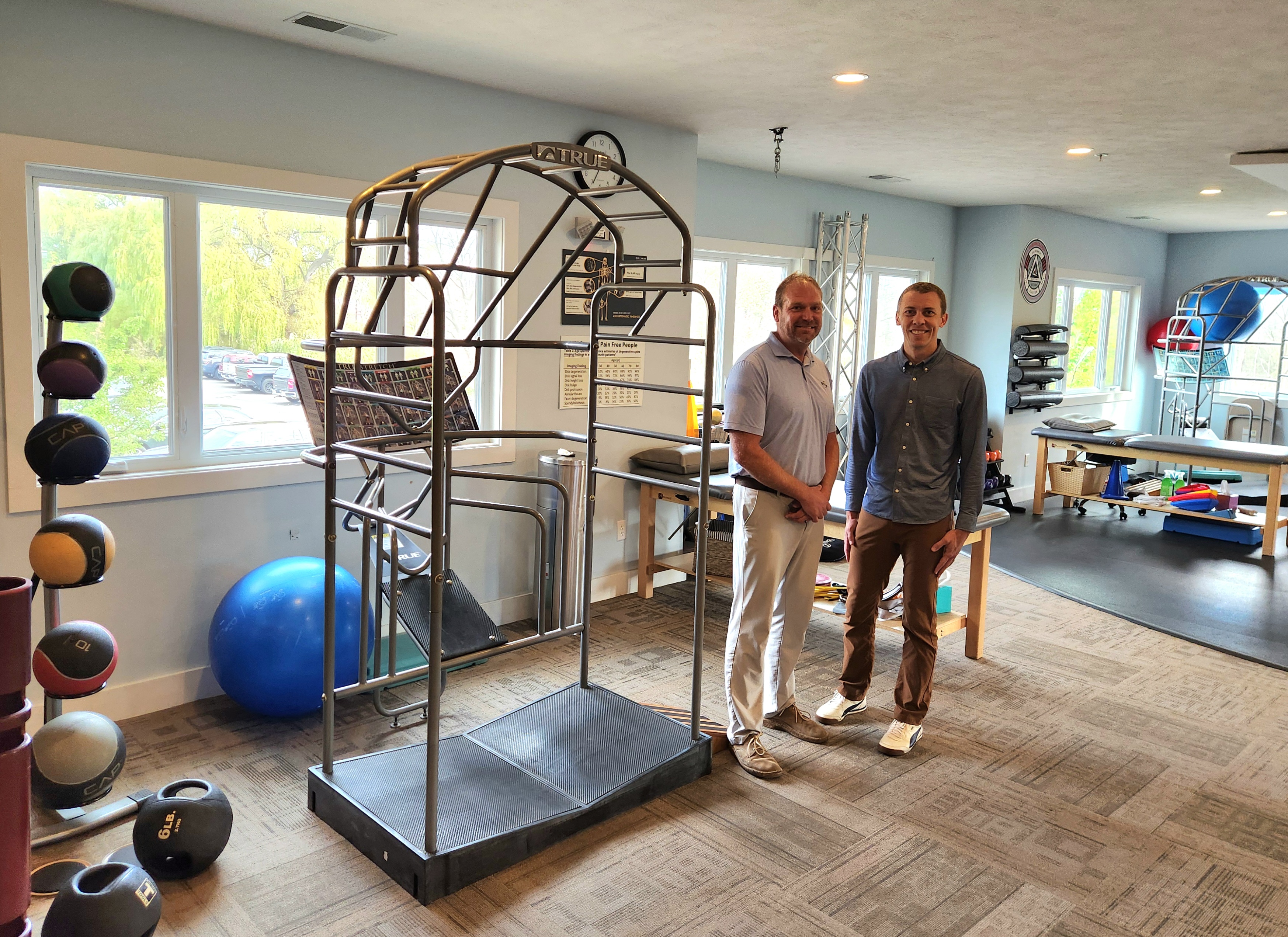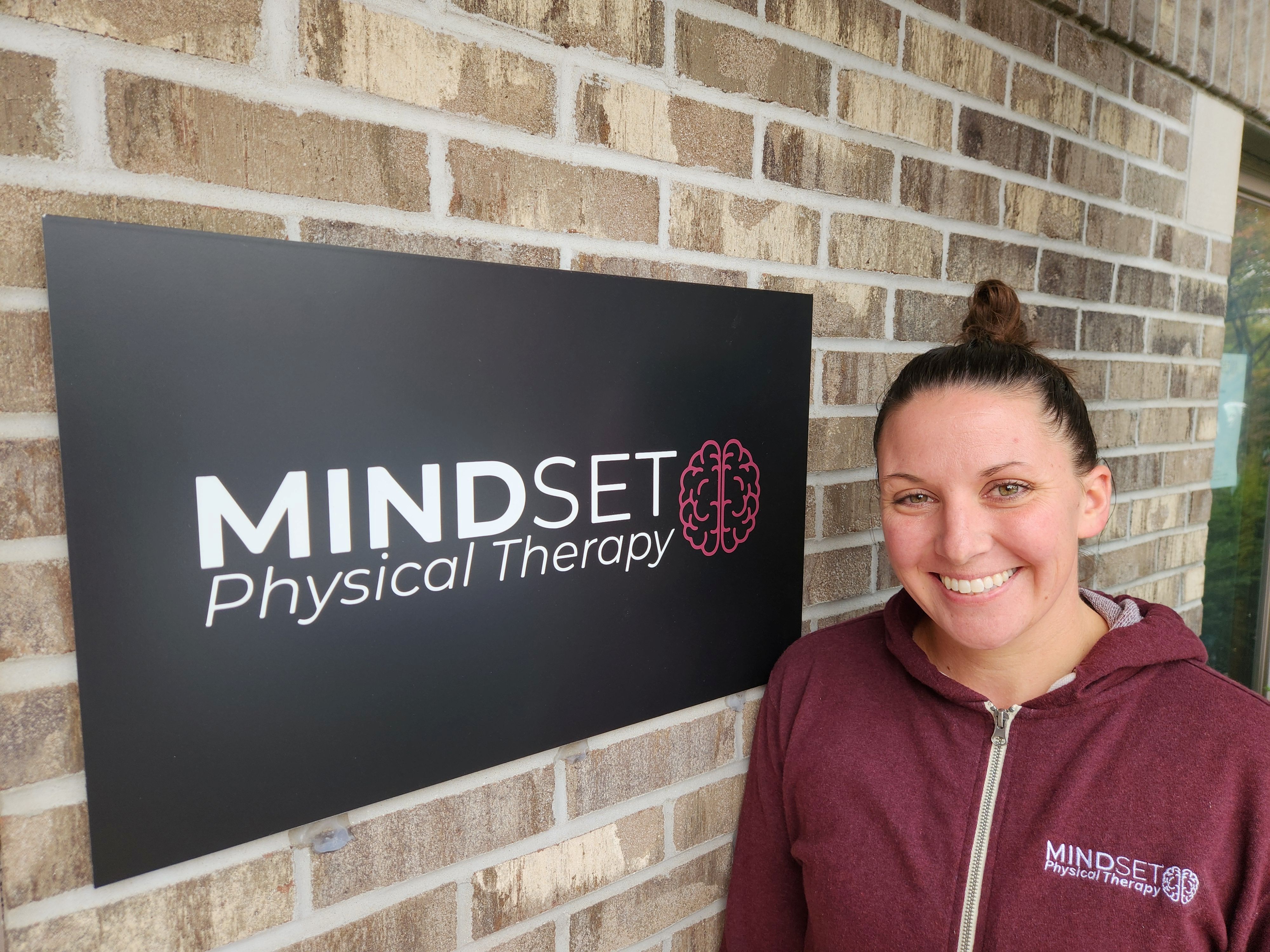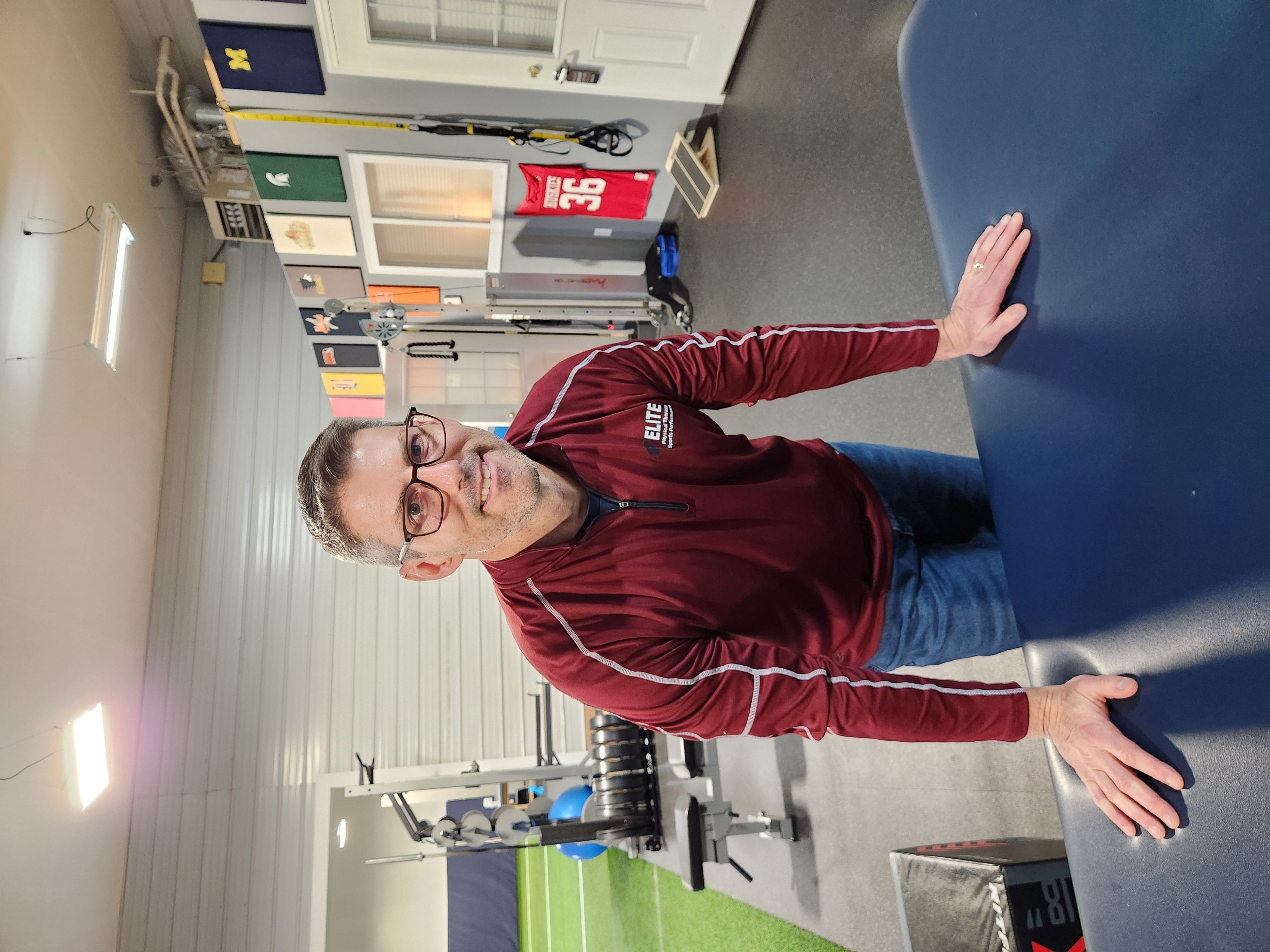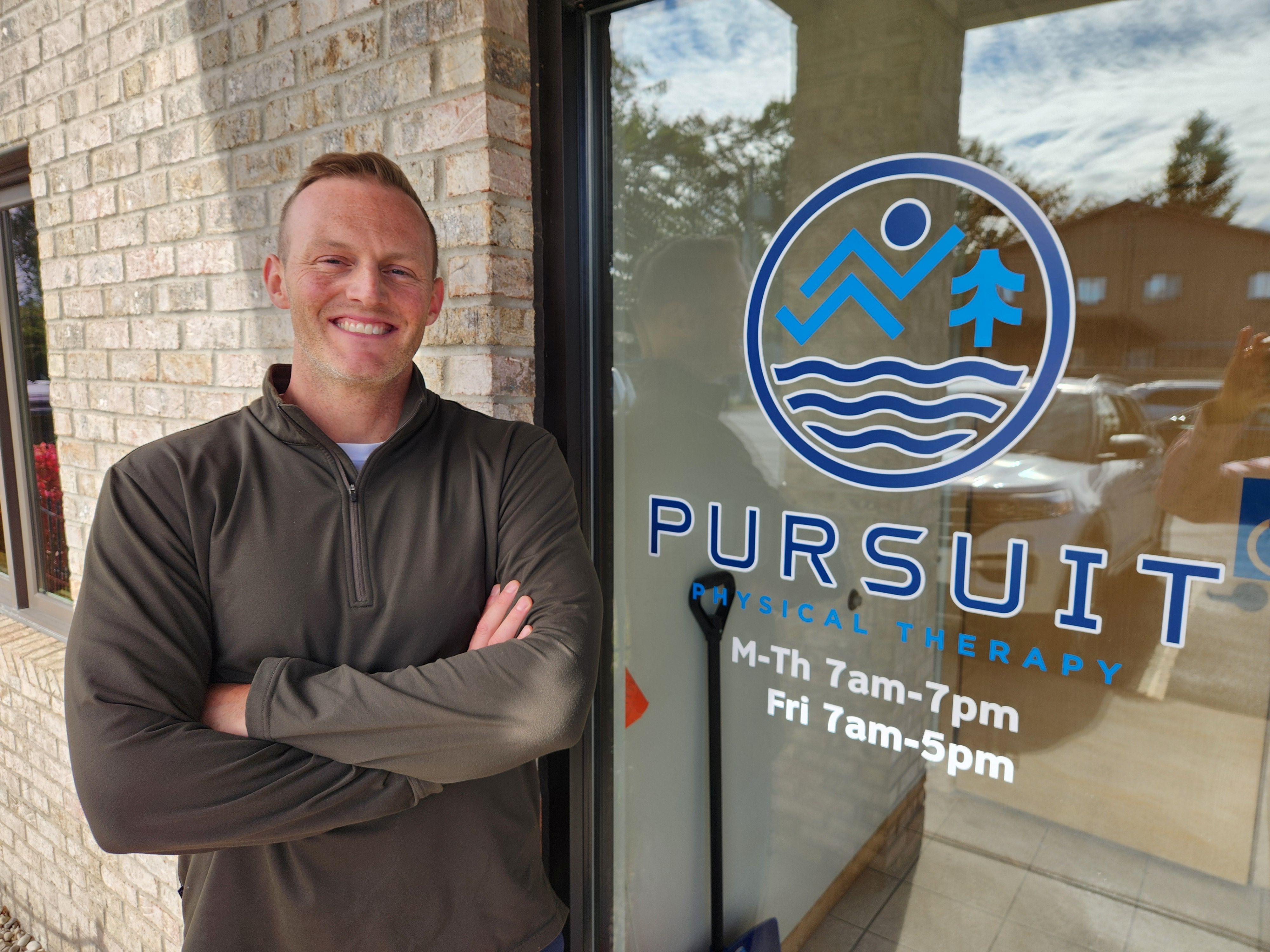Holding the Line: Physical therapy clinics fight for high quality care despite declining reimbursements
November 2025
A business owner faced with declining revenue has a relatively straightforward set of choices.
They could look for new revenue streams. They could raise prices, if it's possible. They could be OK, in theory, with less profit. They also could cut costs by reducing quality, a move that delivers short-term stability but often comes with long-term ramifications.
Faced with continued and significant cuts to reimbursements from private insurance companies and government programs like Medicare, local independent physical therapy clinics are feeling the pinch. Most local clinics, though, are steadfast in their commitment to hold the line on quality of care, especially in a competitive regional market with more choices than ever.
The TCBN connected with four local clinics to learn about how these cuts impact their work.
Slicing and dicing
 Gorecki and Fuson
Gorecki and FusonInsurance companies, to no one’s surprise, dictate nearly everything when it comes to the cost of physical therapy. They set prices for services and how much they’ll reimburse providers for those services.
All of this is in theory negotiable, but far less so for small, private outfits compared to major hospital systems or healthcare providers.
“The big health systems around the country have so much leverage that they get reimbursed on average two and a half times for the same services as somebody who is an independent,” said Andrew Gorecki, founder and owner of Superior Physical Therapy in Traverse City.
Gorecki has been around long enough to see his reimbursements cut in half, even as premiums for policy holders – the patients themselves – increase year after year.
“If I go back to the beginning when we opened in 2011, all reimbursement from insurance companies has gone down between 40 and 50% – so we’re making half as much as we were for the same amount of time,” Gorecki said. “And that’s happening in all of healthcare, but physical therapy as a specialty has been hit the hardest.”
This would be bad enough in a vacuum, but combine it with substantially increased costs of doing business – wages, materials, utilities, you name it – and it’s an extremely tough pill to swallow.
“We’ve taken a pretty significant hit in general in our revenue and profit, and at the same time [costs have done up across the board],” Gorecki said. “It’s really been a squeeze.”
Even insurance companies that previously paid well are failing to deliver.
“Blue Cross is my best payer, for example, but earlier this year they cut our services 18%,” said Kaityln Malaski, owner of Mindset Physical Therapy in Traverse City. “So if I was seeing $150 in reimbursement for a visit with a Blue Cross patient, that's closer to $120 now. You add that up over the course of a day, a week, a month … it’s huge.”
Local therapists are also irked that reimbursements don’t seem to reflect the time or quality of care provided.
“A lot of them don’t even care what you do,” said Joe Heiler, owner and founder of Elite Physical Therapy near Turtle Creek Stadium. “You could see that person for 30 minutes, or you could see them for two hours, and you’re going to get this … so that’s really frustrating because they’re not even looking at the quality of care.”
 Malaski
MalaskiAside from the obvious financial implications of lower reimbursements, therapists are also concerned that this trend stands to harm the quality of patient care over time.
“If you have one open appointment and you see that you have [one patient that] pays double what the other one does, which patient are you calling first?” Malaski said, stressing that this scenario is hypothetical. “It drives down the quality of care for patients who have insurance that through no fault of their own is worse than somebody else's insurance.”
Heiler also worries that the increasingly dire finances of the PT world will hurt recruitment of new therapists.
“It's getting harder and harder to tell [kids interested in PT] ‘Yeah, this is what you want to do. Because after seven or eight years of school and all these student loans, you're going to get out and come into an environment where everybody's squeezed, profit margins are shrinking and nobody is increasing their reimbursements,'” he says. “At some point there just won't be enough PTs because they're not going to spend all that money and not get paid.”
Holding the line
Perhaps the biggest threat to patient care is the urge to churn through more patients to make up for reduced reimbursements. Some physical therapy offices, particularly larger chains, are taking advantage of regulations that allow a therapist to see up to four patients at a time.
 Heiler
Heiler“There’s two different models … patient-centered models where everything is one-on-one, where you have to get to know the patient,” Heiler said. “And then there's the profit-centered model where you're seeing three people at a time and it's just a mill. We never want to be that. So the hard part is: How do you stay one-on-one and very patient-centric?"
Heiler says the most important thing he can do for his business is relatively simple: Provide the best possible patient care. Patients that feel better come back for other issues, and what’s more, they spread the word. Even with decreased reimbursements, Elite is fine as long as patients keep coming through the doors.
“If we do a great job, they’re going to come back, and they’re going to … tell their friends,” he said. “We’ve always relied very much on word of mouth.”
At Superior, they’d rather close their doors than start churning through patients, particularly by seeing multiple at a time.
“We don’t do that because the quality just nosedives,” Managing Director Ben Fuson said. “You can’t pay attention to four people at a time.”
Like Heiler, the Superior team leans into its services and reputation to ensure business keeps coming.
“About 60% of our clients are past patients or friends and family referrals. And that comes from our generosity, our skill, our expertise in the field,” Fuson said. “It’s maintaining those relationships.”
But Superior is also exploring new revenue streams – things that bring in money while offering additional care for clients. They've added dry needling, lasers and use of the clinic space to boost the bottom line while providing more ways for clients to get results.
They’ve also launched a cash-based program called “Hassle Free PT” that mirrors the rapidly growing direct primary care movement, where patients make direct payments to a provider without any insurance involvement.
“You pay one flat rate for the entire episode of care, and we'll take care of you as long as it takes for that episode of care,” Gorecki said.
Gorecki expects to see more of these plans pop up in the physical therapy world, just as he expects to see more offices eventually move to the now-common dental model where patients pay up front for services and later submit to insurance.
Over at Pursuit Physical Therapy, it’s a mixed bag for owner Nick Hawkins. Hawkins started his business in late 2020, after reimbursements had already been trending down for some time. As such, his business model was able to reflect this pattern, with cross-trained staff handling multiple patient and administrative duties.
“We’re in sort of a fortunate situation where we never even experienced the glory days,” he said. “We came into it lean – it’s never been fat.”
 Hawkins
HawkinsBut even though he’s familiar with running a lean operation, he’s exploring other ideas to boost the bottom line. An osteoporosis workshop with six to eight people paying 40 bucks per class per week, for example, could fit within his commitment to quality while providing a revenue injection.
"We've tossed around the idea of doing some form of group class where you can charge cash,” he said. “So your margins are going to be a little bit more, but it's still a fun, high-value thing for patients.”
In the meantime, Hawkins will lean on (you guessed it) his reputation to keep his business strong.
“Part of it's just the blessing of doing good work for so long in this town. I've been here 12 years, and we have really good referral sources,” he said. “Not just doctors, but a lot of good personal trainers and massage therapists, chiros, people that already have relationships with patients.”
Malaski is a board-certified neurologic clinical specialist as designated by the American Physical Therapy Association. She specializes in chronic dizziness, migraines, balance dysfunction and other matters. This gives her a ton of specialized referrals that allow her to be on her own, including those from down or out-of-state doctors who want her to see their patients while they're on their summer vacations.
“If I didn’t have a way that I was different, I probably would struggle to be independent,” she said.
Like the others, and despite her specialization, Malaski says satisfied customers are still the most valuable way to build business in the face of declining reimbursements.
“I can tell doctors about myself until I’m blue in the face, but it doesn't matter,” she said. “The best-case scenario is a direct patient result and that patient going to their doctor and saying, ‘This is where you need to send people.’”
Competition and optimism
Michigan was one of the last states to allow patients direct access to physical therapy, meaning patients can get up to 21 days or 10 visits without a doctor’s referral. This means, among other things, that the PT world is indeed a competitive one – all the more reason for these businesses to want to boost their reputations and attract clients.
But northern Michigan is in general full of active people, and no one is worried about running out of folks who need physical therapy.
“It's competitive, but there's really enough patients that need help in order to make it sustainable for everybody,” Fuson said.
Therapists also sense a groundswell in the public and medical community’s awareness and support for physical therapy, which is now being used in many cases as the first line of treatment.
“There's so many people getting therapy, more than ever before,” Hawkins said. “People are hearing about physical therapy more. More doctors are referring, chiros are referring, massage therapists, trainers. I feel like the industry as a whole is getting a lot more patients.”
Part of this recent upswing in the buy-in for PT might be numerous studies showing that it delivers results, often at a much lower price tag than alternative treatments.
“I'm super optimistic because what we do works. There's nothing that's been studied more that is more effective at the lowest cost than physical therapy,” Gorecki said. “It's better than most surgeries. It's better than injections.”
Hawkins says the Grand Traverse region is also filled with very good therapists. And when that’s the case, it makes everyone step up their game.
“There are so many good therapists in this town … and it just boosts everybody,” he said.














